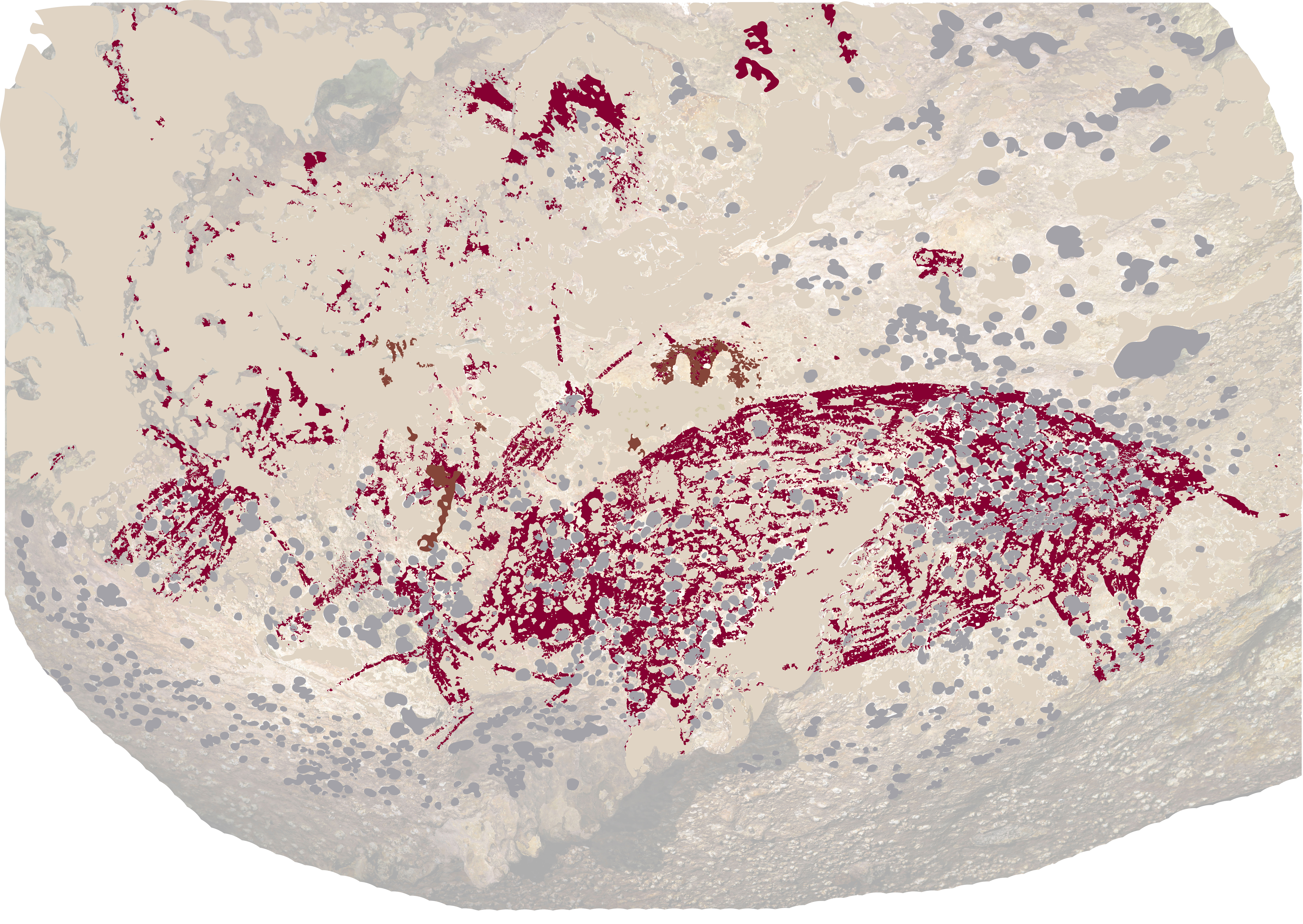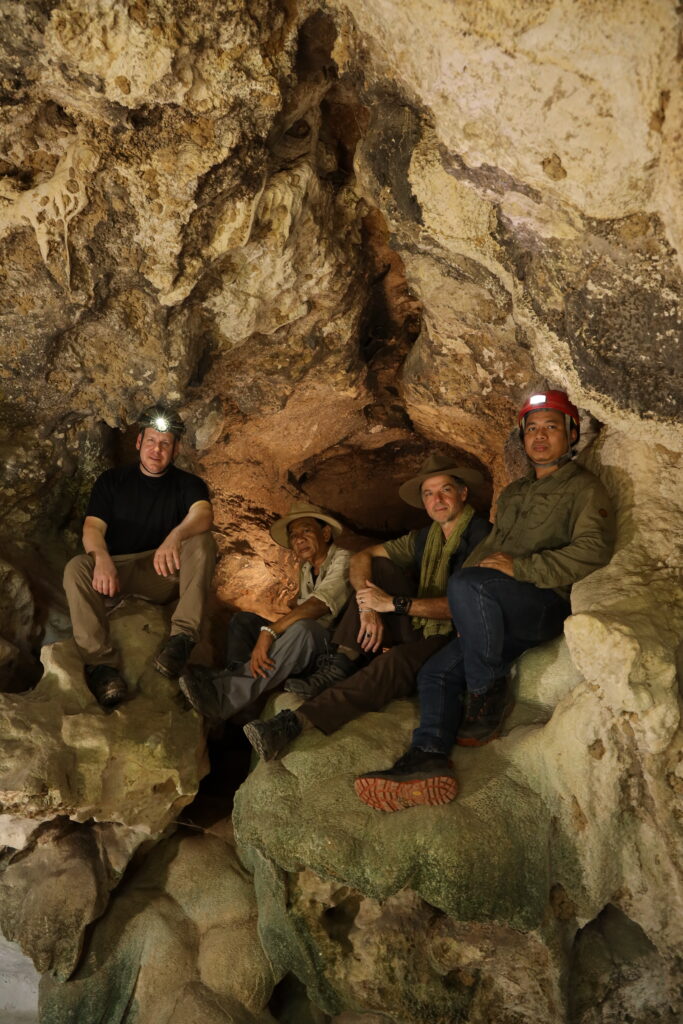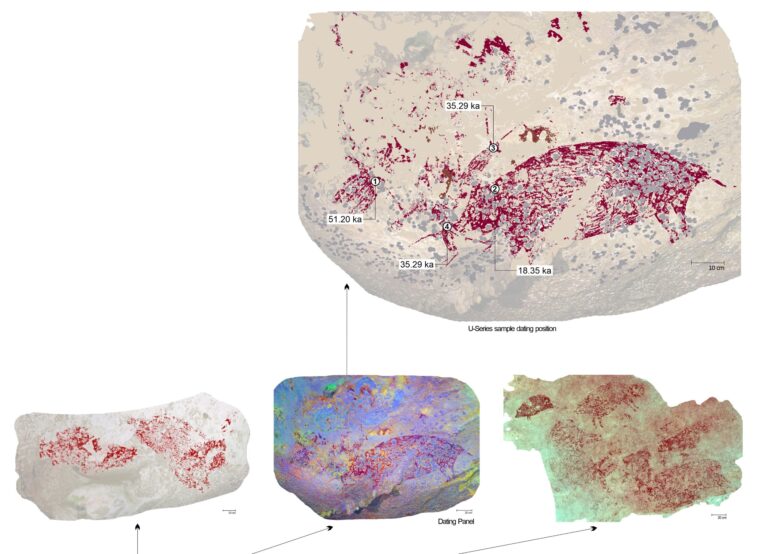A team of scientists co-led by researchers from Australia’s Griffith University, Indonesia’s National Research and Innovation Agency (BRIN) and Southern Cross University have discovered and dated a cave painting on the Indonesian island of Sulawesi that may be the oldest known evidence of storytelling in art, with the findings published in the journal Nature.
The painting, located in the Leang Karampuang limestone cave in the Maros-Pangkep region of South Sulawesi, depicts three human figures interacting with a wild pig.
To determine its age, the team applied a new method of U-series laser ablation analysis (LA-U series) to date tiny layers of calcium carbonate that had formed above the work.
The results revealed that the underlying artwork was painted at least 51,200 years ago, making it the oldest reliably dated rock art image known in the world and the oldest narrative art ever discovered.
The team was led by Adhi Agus Oktaviana, an Indonesian rock art specialist at the National Research and Innovation Agency (BRIN) in Jakarta and a doctoral student at the Griffith Centre for Social and Cultural Research (GCSCR).

The new LA-U dating method was co-developed by Professor Maxime Aubert, an archaeological scientist at the GCSCR, and his colleague at Southern Cross University (SCU) in Lismore, Professor Renaud Joannes-Boyau, an expert in archaeogeochemistry within the Geoarchaeology and Archaeometry Research Group (GARG).
“We have already used the uranium series method to date very ancient rock art in two regions of Indonesia, Sulawesi and Borneo, but our new LA-U series technique is more precise, allowing us to date the first layers of calcium carbonate formed on the work and get closer to the time when the work was created. It will revolutionize the dating of rock art,” said Professor Aubert.
“The innovative technique we have developed allows us to create detailed ‘maps’ of calcium carbonate layers. This ability allows us to identify and avoid regions affected by natural diagenesis processes, which arise from complex growth histories. As a result, our determinations of the age of rock art become more reliable and trustworthy,” explains Professor Joannes-Boyau.
According to Oktaviana, the discovery that the Leang Karampuang painting is at least 51,200 years old has important implications for our understanding of the origins of primitive art.
“Our results are very surprising: none of the famous European Ice Age artworks are as old as this one, with the exception of a few controversial finds in Spain, and this is the first time that the dates of rock art in Indonesia have been pushed back beyond 50,000 years,” Oktaviana said.

The team used the LA-U series to redate calcium carbonate deposits covering a rock painting at a Maros-Pangkep site, Leang Bulu’ Sipong 4.
The painting includes a narrative “scene” depicting figures interpreted as therianthropes (half-human, half-animal beings) hunting warty pigs and dwarf buffalo and had previously been dated by the team to at least 44,000 years ago.

Using this new technique, they demonstrated that this work of art was at least 4,000 years older, or around 48,000 years old.
Professor Adam Brumm from the Australian Centre for Research in Human Evolution (ARCHE) at Griffith, who co-led the study, said the rock art at Leang Karampuang and Leang Bulu’ Sipong 4 shed new light on the great age and important role of storytelling in art history.
“It is remarkable that the oldest rock art we have discovered in Sulawesi so far consists of recognizable scenes: that is, paintings that depict humans and animals interacting in such a way that we can infer that the artist intended to communicate a narrative of some kind – a story,” said Professor Brumm.
Professor Brumm said it was a unique discovery, as the academic view of early figurative rock art had long been that it consisted of single-figure panels in which no obvious scenes were evident, and that pictorial representations of narratives only appeared much later in European art.
The discovery of Oktaviana and the team led by Griffith therefore suggests that storytelling was a crucial element of early human artistic culture in Indonesia from a very early time.
“Humans have probably been telling stories for much longer than 51,200 years, but because words don’t fossilize, we can only rely on indirect approximations like depictions of scenes in art – and the art from Sulawesi is now by far the oldest evidence of this type known to archaeology,” Oktaviana said.
The study “Narrative Rock Art in Indonesia 51,200 Years Ago” was published in Nature.


